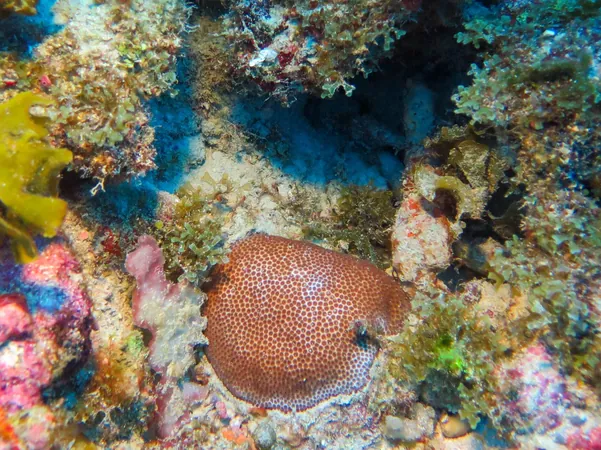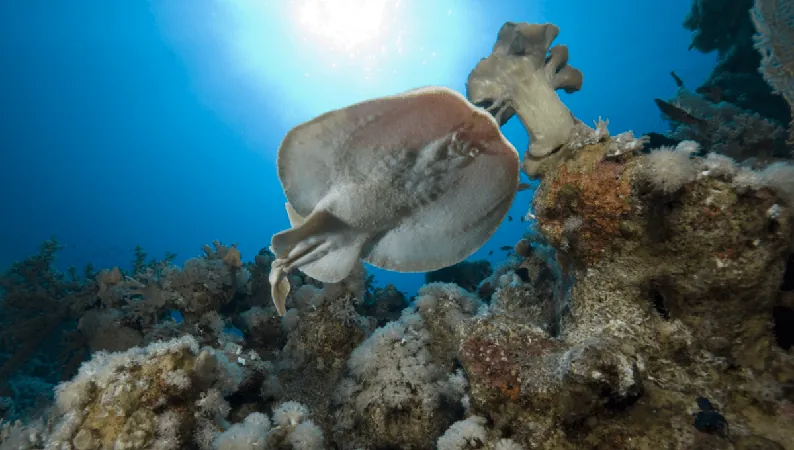
Unlocking the Secrets of Mesophotic Corals: A Hopeful Path to Reviving Florida's Shallow Reefs!
2024-09-23
Author: John Tan
In recent decades, the coral reefs within the Florida Keys National Marine Sanctuary (FKNMS) have faced devastating declines, with an alarming 50% drop in coral cover reported between 1998 and 2011 alone. While extensive research has focused on these shallow reefs, little has been explored regarding the mesophotic zone, which stretches from around 100 to 500 feet below the surface. This little-known underwater realm might hold the key to restoring the shallower reefs that have suffered massive degradation.
Mesophotic coral ecosystems are believed to be somewhat insulated from human-induced stressors thanks to their depth and isolation. Furthermore, these deeper environments may provide a refuge for depth-generalist coral species, potentially serving as a source of larvae for the recovery of shallow reefs after severe disturbances. Notably, mesophotic reefs have escaped much of the destruction linked to bleaching and stony coral tissue loss disease, making them significant reservoirs of genetic diversity crucial for the rehabilitation of shallow areas.
Researchers at Florida Atlantic University’s Harbor Branch Oceanographic Institute, led by Ryan Eckert, a Ph.D. candidate, turned their focus to the blushing coral star (*Stephanocoenia intersepta*), which thrives throughout the Western Atlantic. Their study aimed to uncover the genetic relationships and connectivity between coral populations across different depths. Using advanced genomic DNA analyses, the team examined the genetic diversity and connectivity among these corals and their symbiotic algal partners.
The key finding? Four distinct genetic lineages of the blushing star coral were identified, with two primary lineages illustrating a robust genetic link between deeper and shallower populations. In contrast, shallow-specific lineages exhibited reduced genetic diversity and heightened inbreeding, raising alarms about their viability. The analysis highlighted that mesophotic reefs act as vital reproductive hubs, particularly in the Lower and Upper Keys, offering a glimmer of hope for future coral restoration efforts.
Dr. Joshua Voss, the senior author, emphasized the potential for deeper corals to assist in revitalizing the declining shallow reefs. The Florida Keys is planning significant expansions in the 'FKNMS Restoration Blueprint,' which will provide enhanced protections for these important mesophotic habitats. Given the long-standing decrease in coral cover in the region since the 1970s, these revelations and management strategies present promising avenues for coral reef recovery.
However, concerns linger regarding the observed low genetic diversity and the prevalence of inbred individuals in shallow lineages. Eckert warns that these factors could pose challenges for successful conservation and restoration initiatives. Yet, even if mesophotic corals can't directly replenish shallow reefs with larvae, they could still serve as a 'seed bank' for future breeding programs and land-based nurseries aimed at supporting ongoing restoration efforts.
The study also uncovered distinct cryptic lineages of the blushing star coral that exhibit minimal intermixing, indicative of reproductive isolation, which may result from factors such as varying spawning times and localized fertilization practices. Recognizing and characterizing the genetic biodiversity within different coral lineages is crucial for managing and protecting these vital marine ecosystems as we confront worsening environmental challenges.
As Voss noted, 'A comprehensive understanding of genetic diversity is essential for developing effective coral conservation and restoration strategies, ultimately ensuring the resilience and health of our beloved coral reef ecosystems.'
With avenues for further research and management strategies turning toward mesophotic corals, there’s hope that the vibrant underwater landscapes of Florida's reefs can begin to heal and thrive once more. Will these deeper coral populations be the key to saving the shallow reefs we hold dear? The future of Florida’s marine ecosystems may depend on it!




 Brasil (PT)
Brasil (PT)
 Canada (EN)
Canada (EN)
 Chile (ES)
Chile (ES)
 Česko (CS)
Česko (CS)
 대한민국 (KO)
대한민국 (KO)
 España (ES)
España (ES)
 France (FR)
France (FR)
 Hong Kong (EN)
Hong Kong (EN)
 Italia (IT)
Italia (IT)
 日本 (JA)
日本 (JA)
 Magyarország (HU)
Magyarország (HU)
 Norge (NO)
Norge (NO)
 Polska (PL)
Polska (PL)
 Schweiz (DE)
Schweiz (DE)
 Singapore (EN)
Singapore (EN)
 Sverige (SV)
Sverige (SV)
 Suomi (FI)
Suomi (FI)
 Türkiye (TR)
Türkiye (TR)
 الإمارات العربية المتحدة (AR)
الإمارات العربية المتحدة (AR)